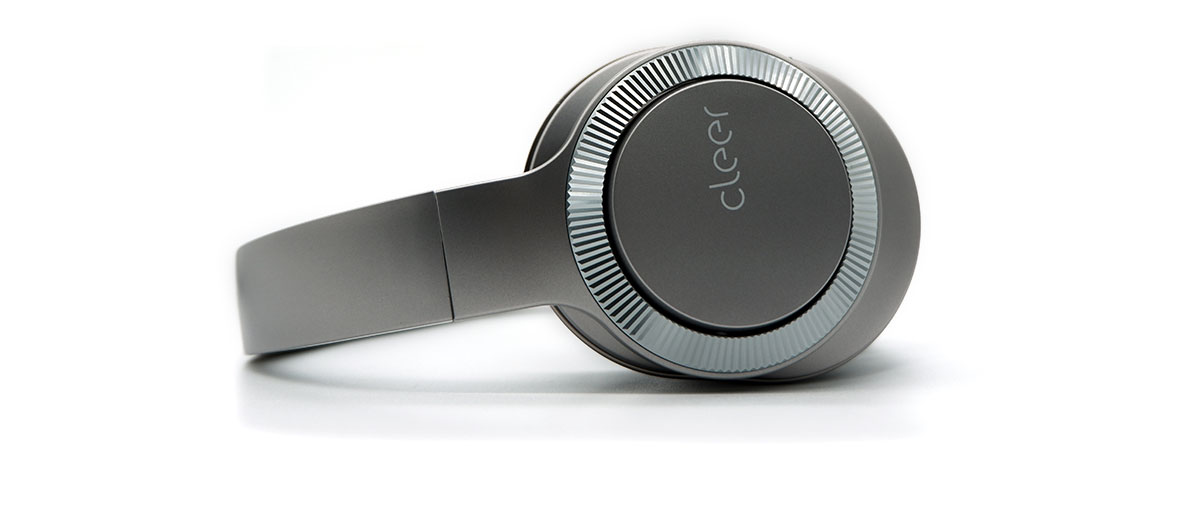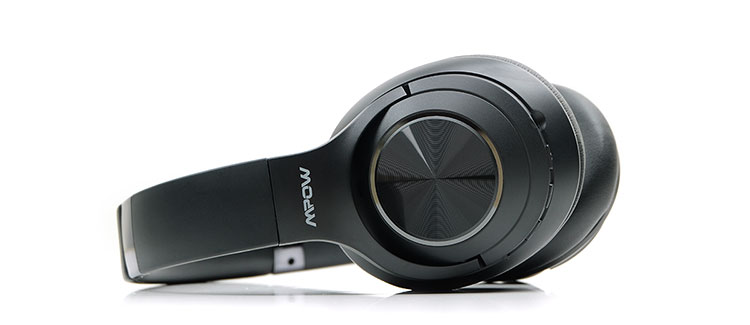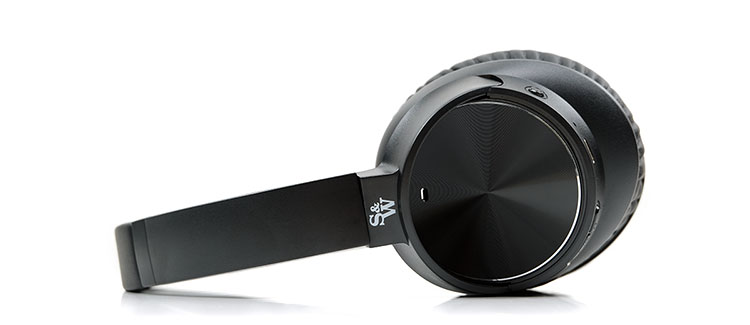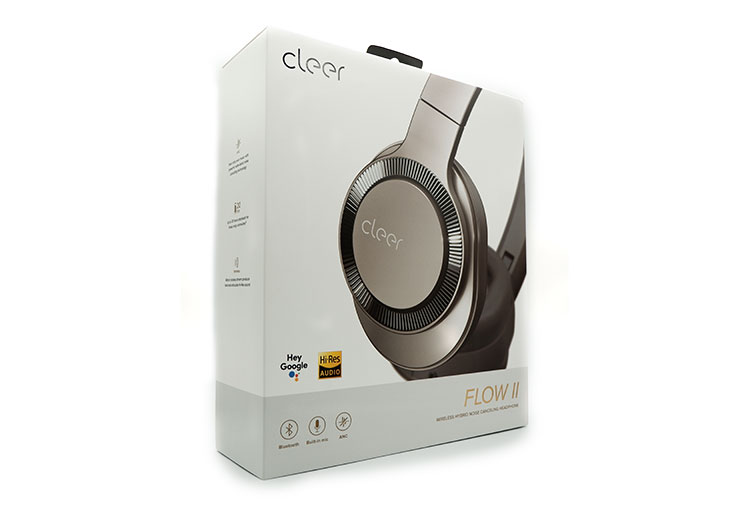Sound Impressions
For my listening tests, I mostly listened with normal mode and ANC mode on. I was able to listen to music on ambient mode, but it was not the focus of listening tests, as it isn’t practical to do that.
Bass
Listening to the Flow II in normal mode, the Flow II sounded a bit bass shy. It has a good sub-bass extension, but it ends up a bit flat when drums start to come in. While bass still retains some bass texture and definition, it lacks impact.
Turning on the ANC mode dramatically changes the bass region on the Flow II. While retaining a good amount of sub-bass extension, the Flow II will have a better sense of bass presence, where drum hits will have a good amount of weight and control while each hit has an immediate sense of attack.
Listening to the song Bright by Echosmith, the bass groove that comes in at around 0:37 feels flowy and the groove of the bass is quite infectious.
Midrange
Listening to normal mode, the transition from the bass to the midrange is slightly disjointed. Where harmonic overtones from bass notes become slightly more emphasized than the fundamental tone.
When it comes to midrange tones though, Male vocals have a good sense of texturization. Michael Buble’s vocal performance in the song Gotta be Patient is presented well. It retains a good amount of body while remaining smooth and textured.
Guitar and piano tones are generally pushed a bit more forward, while the timbre of both instruments remains natural. Harmonic overtones of both instruments are properly presented because of a good tonal balance between the midrange and the treble.
Although turning ANC mode on doesn’t affect midrange tones in terms of quantity or quality, the tonal balance between the bass and the midrange is more natural with ANC mode on.
Treble
I mentioned earlier that the upper midrange and the treble have a good tonal balance between them. This would lead some to believe that the Flow II is a bright headphone. But this is not the case, as the treble is tuned to be just forward enough to sound sparkly, but never to the point of being shrill.
Cymbal hits end up being quite sparkly with the Flow II, and a natural shimmer can easily be perceived through the Flow II. Furthermore, a sense of the airiness of treble instruments is easily picked out from the music.
While the slightly more forward treble might not be a good thing with bass light headphones, putting the Flow II in ANC mode creates a better balance between the bass and the treble frequencies. The Flow II gives the subtle gong hits in the song Bubbles by Yosi Horikawa a good balance with the underlying bass notes.
Staging
With ANC mode on, the depth information within the soundstage suddenly becomes more apparent. In the song Bubble by Yosi Horikawa, each bouncing ball feels like it falls in a precise location within my head. The shape of the soundstage also feels quite natural because of a slightly forward center image while having a natural amount of lateral directionality.
With ambient mode on, however, the soundstage feels extremely expansive. However, it ends up being quite 1 dimensional, where all the sound elements just feel like they originate from a certain distance out of my head. But everything just sounds like they come from the same distance. Directionality is generally good, but image precision could be better.
Ambient Mode
Switching into ambient mode pushes most of the sound elements back, as the music becomes more like background music. While ambient mode will seem to lack clarity, that’s to be expected since the ambient mode is designed to amplify the outside noise instead of focusing on music playback.
Sound Conclusion
Based on my experience, ANC mode typically comes at the sacrifice of audio quality. I was surprised that the Flow II seems to have been designed to run with the ANC mode on to sound its best.
While I still have trouble feeling comfortable with the feeling of having my ears sucked out when there are lulls in the music, the Flow II just sounds like a much more capable headphone with the ANC on when I start listening to music.
While there is a significant drop in sound quality in ambient mode, it was designed with environmental awareness in mind. Although this comes at the expense of some sound quality, ambient mode achieves the goal of ensuring that the user is conscious about what is happening around him.
Wired synergy
While the Flow II sounds good as a wireless headphone in ANC mode, testing it in wired mode is a different experience. When I plugged the Flow II into my Cayin N5ii, the Flow II sounded like a different headphone.
The bass is slightly more elevated to a more fun level compared to what you get with either wireless mode. The midrange on the other hand sounds more defined while the treble stays articulate.
The most significant improvement though can be found with the soundstage and detail retrieval capability of the Flow II. While listening through a DAP, it just sounded like it had a lot of depth information with much better directionality and image clarity.
While listening to the Flow II with the ANC mode is pretty good, the ironless driver technology inside the headphones has more potential to be unlocked if only Cleer put in a better DAC/amp inside the Flow IIs.
Select Comparisons
MPOW H21
Technical
The MPOW H21 is a slightly cheaper headphone than the Cleer Flow II, and it shows outwardly in both the packaging, the accessories, and the quality of the materials used in the build.
While the 2 headphones might look quite similar, the Flow II offers touch controls, while the H21 only offers button-based controls. While the touch controls on the Flow II might be a bit fiddly, the buttons on the H21 are quite small.
The overall size of both headphones is quite similar, the inside of the earcup of the H21 is slightly larger than the one on the Flow II. So those with larger ears may have issues with the Flow II.
Connecting to the headphones was a bit easier on the Flow II because I was assisted by their NFC capability. The H21 is a bit harder to connect to since going into pairing mode involves pressing the power button for 5 seconds while the headphone is off. The connection pairing experience is simply more straightforward with the Flow II, while subsequent connections are equally reliable on both headphones.
The H21 only comes with a micro USB port, which is already a dated interface, while the Flow II comes with USB C. A full charge on the H21 can last up to 40 hours, while the Flow II can only last up to 22 hours.
Getting a full charge is a bit faster on the Flow II though, as it requires less than 2 hours with its fast charging feature, while the H21 needs almost 3 hours to fully charge.
The Flow II has a slight advantage when it comes to the codecs that it can accept, as it has aptX HD, while the H21 is limited to only aptX.
Performance
While both headphones have noise-canceling mode, the one on the Flow II has a much more audible effect. Outside noise is more effectively blocked out, but at the same time, there is more of a sucked-out feeling when ANC is on when there isn’t any music being played.
Interestingly, the H21 seems to have been tuned while the ANC is off, while the Flow II is designed to sound its best with ANC on. Overall, the H21 sounded a bit less impactful, and hollow, while the Flow II has a richer tone overall.
The vocal range on the Flow II is just a bit lusher and textured, while the H21 is dry comparatively. Both don’t elevate the midrange significantly more than the other though. The treble on both headphones is pushed back a little, but it’s more so on the H21. This gives the Flow II a bit of an advantage in presenting more details in the treble region.
While imaging and detail retrieval was slightly better on the Flow II, the H21 has a significantly more expansive soundstage. This is because the H21 sounded best with the ANC off, but turning on the ANC on the H21, and the soundstage would feel about the same size as the Flow II, with the H21 not having any of the sonic benefits of the Flow II.
Looking at the H21 and the Flow II side by side, it’s apparent that there is a price disparity between the 2 headphones. Accessories and build quality is a step up on the Flow II.
However, the H21 narrows the gap slightly in terms of sound quality, but if you’re looking for a true noise-canceling headphone that’s designed to sound good with ANC mode on, the Flow II is the more evenly tuned and detailed of the 2 headphones.
Strauss & Wagner ANCBT501
Technical
The Strauss & Wagner ANCBT501 might be priced slightly closer to the Flow II, but the disparity between the 2 headphones is still evident.
While the inside of the earcups on the ANCBT501 is slightly larger than the Flow II, the earpad material and the foam are slightly stiffer on the Flow II. This results in the Flow II being more secure and able to create a better seal around the ears.
When it comes to the build, the Flow II feels like it’s built with a sturdier type of plastic. Aside from that, the controls on the ANCBT501 utilize buttons that are quite loose, but they serve their purpose. The Flow II implements mostly touch control, which is quite frankly more fiddly at times.
Both headphones are equipped with fast charging, and they can both be fully charged in less than 2 hours. The ANCBT501 has a bit more battery life at 40 hours, against the Flow II having only 22 hours.
The Bluetooth connectivity is reliable on both headphones, as both headphones automatically reconnect to my phone after doing an initial pairing. I was more impressed with my pairing experience with the Flow II, because of its responsive NFC connectivity. The Flow II can connect using AptX HD, which gives it a leg up over the ANCBT501 which is only capable of AptX.
Both headphones have ANC mode, and transparency mode, the Flow II doesn’t have a “normal mode”. This is available on the ANCBT501, and this mode tends to give me the most natural sound out of the ANCBT501. While I found the most pleasant sound on the Flow II with its ANC on.
Performance
Sonically, the ANCBT501 creates a lot more bass in terms of quantity. However, the quality of the bass on the ANCBT501 is not as controlled as it is on the Flow II. In terms of midrange, the Flow II has more texture and a bit more of a flowy character. With the treble, the Flow II has a much more sparkly treble, making it a bit more forward compared to the ANCBT501.
The soundstage, is much wider on the Flow II, even if the ANC mode already made the soundstage a bit more closed in. Imaging is a lot more precise with the Flow II as well since it can create images within the soundstage, instead of just at the extremes and in the center.
Plugging them into their wired modes makes it a bit more interesting though. Since both headphones improve quite a bit in terms of soundstage, imaging, and overall detail retrieval with the better upstream gear connected directly to the drivers inside.
Even when ANCBT501 has a more controlled bass region in its wired more, the Flow II’s ironless driver can offer better detail retrieval overall.
These 2 headphones have quite a few similarities, most prominent of which is how they both improve significantly when their internal DACs are bypassed. But the price gap between the 2 headphones becomes evident because of the build quality, packaging, and included accessories.
Sonically, both headphones are equipped with very capable drivers, but the Flow II pulls ahead of both in its wired mode as well as when it’s powered by the on-board DAC.
Our Verdict
The Cleer Flow II is what I would call the next level up from budget ANC headphones such as the MPOW and Strauss & Wagner variants we compared it with. Certainly, in terms of overall aesthetics, materials, packaging, and accessories it merits its higher price point.
Its wireless functionality is generally intuitive with a strong BT signal though touch control accuracy can be a little fiddly at times. Noise Cancelling on the Cleer Flow II is excellent, solid isolation levels and in actual fact, I preferred the balance it brought to the sound quality over its own non-ANC wireless presentation.
However, going wired is where you get an audible upgrade in sound quality with better dynamic range and staging potential.
That’s the power of choice for me and a wise decision by Cleer to allow you to go both wireless and wired with the Flow II. You get a number of sound signatures with the Flow II and a lot of configurations that should appeal to a wide variety of user’s needs.
Cleer Flow II Specifications
- 40mm Ironless Driver™
- Google Assistant Voice Interface
- Powerful Best-in-class hybrid noise canceling
- Hi-Res Audio certified with supplied 3.5mm cable
- Up to 20 hours playback with noise-canceling enabled




